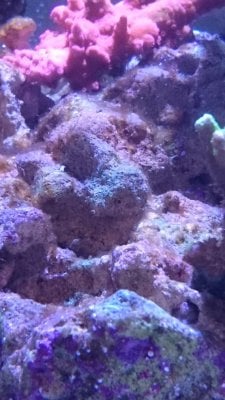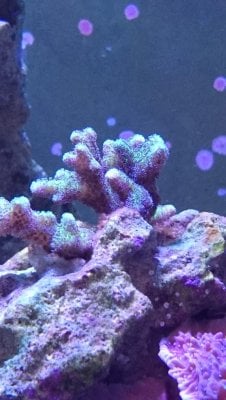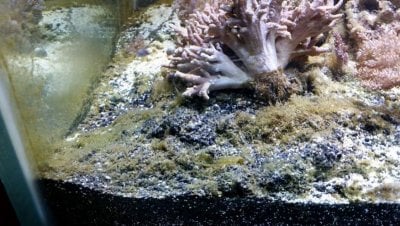imo no ats can consistently beat it. We can't even get the near lethal tankwide measures such as jacked kh to make consistent responses.
I'm equally guilty of once thinking hard peroxide doses would kill all dino infestations as well. By all means try what we think works, but a division begins if you seek out the true hard invaded tanks and try and one off apply what may have worked in a few tanks.
imo nobody is currently capable of beating dinos across challenge tanks with a consistent method.
Porkchop express on nano reef.com has a striking example
For three months we've done
High peroxide above 1:10
Hand removal daily with no gains of biomass but also no cessation. Hand removes twice a day three months
Pure taped black tank black outs so long it was killing the coral, week at a time while max dosing with peroxide
High alk and pH boosts
Phosphate scrubbing before and during the invasion (ats will have no benefit here)
Only a 55 watt pond based uv sterilizer is affecting a control (on a nano reef FYI)
Rated for multi hundred gallon pond
Grossly oversized uv is the Hail Mary pass for the bad tanks check it out
Even that can't be assured to work, all it did was lessen his grow back it didn't remove the entire biomass
I'm equally guilty of once thinking hard peroxide doses would kill all dino infestations as well. By all means try what we think works, but a division begins if you seek out the true hard invaded tanks and try and one off apply what may have worked in a few tanks.
imo nobody is currently capable of beating dinos across challenge tanks with a consistent method.
Porkchop express on nano reef.com has a striking example
For three months we've done
High peroxide above 1:10
Hand removal daily with no gains of biomass but also no cessation. Hand removes twice a day three months
Pure taped black tank black outs so long it was killing the coral, week at a time while max dosing with peroxide
High alk and pH boosts
Phosphate scrubbing before and during the invasion (ats will have no benefit here)
Only a 55 watt pond based uv sterilizer is affecting a control (on a nano reef FYI)
Rated for multi hundred gallon pond
Grossly oversized uv is the Hail Mary pass for the bad tanks check it out
Even that can't be assured to work, all it did was lessen his grow back it didn't remove the entire biomass
Last edited:






















